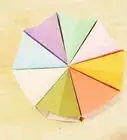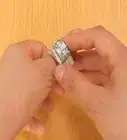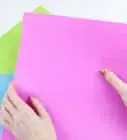This article was co-authored by wikiHow Staff. Our trained team of editors and researchers validate articles for accuracy and comprehensiveness. wikiHow's Content Management Team carefully monitors the work from our editorial staff to ensure that each article is backed by trusted research and meets our high quality standards.
The wikiHow Video Team also followed the article's instructions and verified that they work.
This article has been viewed 60,799 times.
Learn more...
Origami fireworks, with multidimensional peaks and varying colors, are reminiscent of fireworks exploding in the sky. You can use any type of square shaped paper to create your origami fireworks, though special origami paper might better hold the creases of your folds. But no matter the paper you use, with clean, crisp folds and attention to detail, you'll soon have origami fireworks made by your own hand!
Steps
Making the Initial Folds for Your Origami Firework
-
1Gather, or make, your materials. You can purchase specialty origami paper from most craft stores or online, or you might consider making your own origami paper. So that your fireworks look bright and festive, and to get this effect you'll want your origami paper to be brightly colored on one side and white on the other. You'll need 12 square sheets of paper. For the best arrangement of colors, you might use two sheets each of the following:
- Red paper
- Orange paper
- Yellow paper
- Green paper
- Blue paper
- Purple paper
- Folding bone (for sharp creases; optional)
-
2Use a folding bone, if you desire. A folding bone is a tool that is used in paper crafts to help make sharp, crisp creases while preventing strain to your fingers.[1] To use a folding bone, press it firmly along the lines of your folds. Some homemade folding bones can be fashioned from:
- A metal spoon
- An old credit card
- A flat paperweight
Advertisement -
3Fold six sheets, creased from corner to corner. Arrange six of your sheets into a stack, taking care to line the papers up evenly. Lay the papers so that the white sides are face up, and then turn the stack so that the squares of paper form a diamond shape in front of you.[2] Then:
- Fold your papers vertically so that a crease runs from the top to the bottom corner, then unfold and smooth.
- Fold your papers horizontally so that a crease runs from the left to the right corner, then unfold and smooth.[3]
-
4Perform a blintz fold your stack of six sheets. A blintz fold draws the four corners of your paper to its center, folding the outer edges to create a smaller square.[4] To form your blintz fold:
- Take a corner and fold its tip to the center of your paper where your first two creases cross.
- Repeat this until all four corners of your paper have been folded so the corners meet in the center.
- Unfold your blintz fold and smooth your papers.
-
5Fold you paper horizontally in half. First, reorient your paper so that it lies before you on the table as a square and not a diamond. Then, take the top of your paper and fold it even with the bottom of your paper and crease the fold, then unfold.[5]
-
6Fold the top and bottom to meet at the middle. The top and bottom edges of your paper should be in line with your previous, horizontal fold that halved your square paper. The top and bottom edges of your paper should meet along the middle.[6] Crease your folds, then unfold the paper.
- Rotate your paper so that the horizontal folds you just made are vertical.
-
7Fold to the first diagonal intersection on your paper. Take the top of your paper and fold it a small distance until the top edge is even with the first diagonal intersection where your X crease crosses the outside of your diamond shaped crease.[7]
- Fold the bottom of your paper similarly, until its edge is also even with the first diagonal intersection where the X crease crosses the diamond shaped crease.
- Turn over your paper so the colored side is face up.
-
8Strengthen your diagonal creases. The creases running from corner to corner and forming an X shape on your paper should be folded once again so that these are crisp, strong folds. Then turn your paper over.[8]
- At this point, you should rotate your paper to return it to the orientation where three horizontal folds run between the left and right sides of your paper.
Folding the Waterbomb Base and Locks
-
1Collapse the left and right quadrants to forma triangle. This shape is known among paper crafters as a waterbomb base.[9] The current orientation of your paper should be so that your X crease divides your paper into four quadrants, you have three horizontal folds from running from left to right sides, a diamond shaped crease, and two outside vertical creases from top to bottom.[10] Take your left and right quadrants and:
-
2Squash fold your waterbomb base. A squash fold is where you fold your paper up into the air and then smush it down to form a crease that often reveals some of the opposite side of the paper's color (in this case, white).[13] Along the inside of your triangular waterbomb base, there should be creases in the shape of an upside down triangle. From the downward facing point of that inner triangle:
- Pull the bottom edge of your waterbomb base up so that the downward facing point of your inner triangle is touching the upward point of your waterbomb base.
- As you pull the bottom of your paper toward the top, you may need to pull the corners of your triangle inward.[14] [15]
- Turn over your paper and repeat the process.
- At this stage, your paper should be a solid triangle shape on top, with two "legs" at the bottom of the triangle that are unconnected.
-
3Crease your locks. The creases you form here will turn into locks that hold your papers together into a single design. Use a squash fold by lifting the bottom of one leg of your paper so that it's bottom folds in line with the bottom edge of the base of the triangle at the top of your paper. [16] [17]
- Repeat this process with the other leg of the same side of your paper, then turn your paper over and then perform this fold again.
- The squash fold you use to crease your locks will create small triangles that have points facing out to the left and right.
-
4Return your locks to the starting position. After you have creased the folds of your locks, you'll need to unfold these so that your paper returns to its previous shape: two rectangular legs and a triangular top. Repeat the unfolding process on both sides.[18]
-
5Repeat this process with your remaining six sheets. When you fold your second set of six sheets, be sure you start with the color side up instead of the white side up. When you complete this phase of your origami firework, you should have six folded papers with color facing outward and six with the white side facing outward.
Assembling Your Origami Firework
-
1Separate your papers, if necessary. If you have been folding your sheets individually, you won't need to separate your papers, but if you have been folding six at a time, you'll need to separate these to move forward. Stack your finished, folded papers into like piles, one with the colored side out and the other with the white side out.[19]
- Be sure your colors correspond between piles. If the first color of your colored pile is red, the first color of your white pile should also be red (on the inside).[20]
-
2
-
3Insert the flap into the pocket. To find the pocket on your colored paper, slightly open the outer flaps of paper on the "legs." This is the pocket into which you will insert the white flap of your other paper.[23] You will also need to:
-
4Free the other white flap. Once you have successfully inserted your white flap into the colored pocket, open the "legs" that you've been holding together with your right hand on the other side to expose the other flap. Now you can fit the second flap into your next piece of colored paper.[26] [27]
- Lock your white and colored papers together until all 12 pieces are connected.
- The bottoms of your linked pieces of paper should be even.
-
5Invert the paper so the top triangle faces downward. Now you can fold the right two flaps of your outermost white paper to reveal the next paper in the series, which should be colored. Then fold the top of your paper down so that the flat top edge is even with the base of the now inverted triangular shape.[28]
- This should form the same left and right outward pointing triangles that you folded when you creased your lock folds.
- Fold all of your lock creases for each paper, starting from one end and skipping the end white paper.[29]
-
6Connect your ends together. You should spread out your now connected and locked together papers to make connecting the ends easier. Put the end white papers final flap into the pocket of the colored paper at the other end of your paper chain.[30]
- Close the two outer locks by rotating the paper so that the inside is facing outward.
- Once you have locked all the individual parts of your firework together and have rotated the inside out, your firework should be complete.
Community Q&A
-
QuestionHow does it stick together? Mine is falling apart.
 Community AnswerYour origami masterpiece should stick together by itself because of how you have folded it. If it doesn't, you have gone wrong somewhere in folding the paper to get your finished result. Try doing it again, but be a little more careful.
Community AnswerYour origami masterpiece should stick together by itself because of how you have folded it. If it doesn't, you have gone wrong somewhere in folding the paper to get your finished result. Try doing it again, but be a little more careful. -
QuestionDo I have to have 6 papers?
 T. ChinsenTop AnswererStep 1 of the article shows 12 pieces of paper. Two sets of six units are folded and interlocked to form the completed structure.
T. ChinsenTop AnswererStep 1 of the article shows 12 pieces of paper. Two sets of six units are folded and interlocked to form the completed structure. -
QuestionCan I use big square paper?
 Community AnswerYes! You can start with paper squares of any size.
Community AnswerYes! You can start with paper squares of any size.
Things You'll Need
- Standard origami paper (12 square sheets)
- Folding bone (to make sharp creases; optional)
References
- ↑ http://www.origami-resource-center.com/folding-bones.html
- ↑ http://www.spitenet.com/origami/pdf/Fireworks.pdf
- ↑ http://www.spitenet.com/origami/pdf/Fireworks.pdf
- ↑ http://www.origami-instructions.com/origami-blintz-base.html
- ↑ http://www.spitenet.com/origami/pdf/Fireworks.pdf
- ↑ http://www.spitenet.com/origami/pdf/Fireworks.pdf
- ↑ http://www.spitenet.com/origami/pdf/Fireworks.pdf
- ↑ http://www.spitenet.com/origami/pdf/Fireworks.pdf
- ↑ http://www.origami-instructions.com/origami-waterbomb-base.html
- ↑ http://www.spitenet.com/origami/pdf/Fireworks.pdf
- ↑ http://www.happyfolding.com/instructions-yamauchi-fireworks_improved
- ↑ http://www.spitenet.com/origami/pdf/Fireworks.pdf
- ↑ http://www.origami-instructions.com/origami-squash-fold.html
- ↑ http://www.happyfolding.com/instructions-yamauchi-fireworks_improved
- ↑ http://www.spitenet.com/origami/pdf/Fireworks.pdf
- ↑ http://www.happyfolding.com/instructions-yamauchi-fireworks_improved
- ↑ http://www.spitenet.com/origami/pdf/Fireworks.pdf
- ↑ http://www.spitenet.com/origami/pdf/Fireworks.pdf
- ↑ http://www.spitenet.com/origami/pdf/Fireworks.pdf
- ↑ http://www.spitenet.com/origami/pdf/Fireworks.pdf
- ↑ http://www.happyfolding.com/instructions-yamauchi-fireworks_improved
- ↑ http://www.spitenet.com/origami/pdf/Fireworks.pdf
- ↑ http://www.spitenet.com/origami/pdf/Fireworks.pdf
- ↑ http://www.happyfolding.com/instructions-yamauchi-fireworks_improved
- ↑ http://www.spitenet.com/origami/pdf/Fireworks.pdf
- ↑ http://www.happyfolding.com/instructions-yamauchi-fireworks_improved
- ↑ http://www.spitenet.com/origami/pdf/Fireworks.pdf
- ↑ http://www.spitenet.com/origami/pdf/Fireworks.pdf
- ↑ http://www.spitenet.com/origami/pdf/Fireworks.pdf
- ↑ http://www.spitenet.com/origami/pdf/Fireworks.pdf
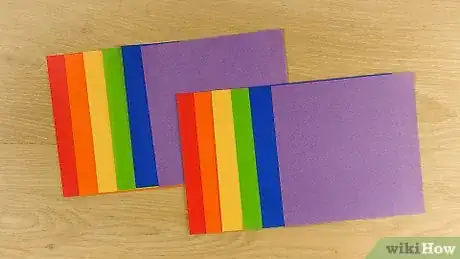
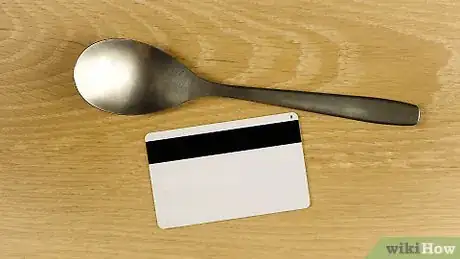
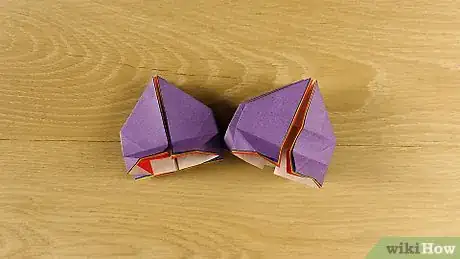
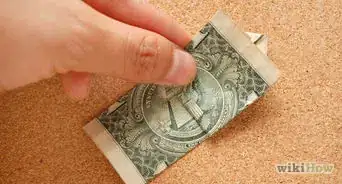









-Step-10-Version-2.webp)
